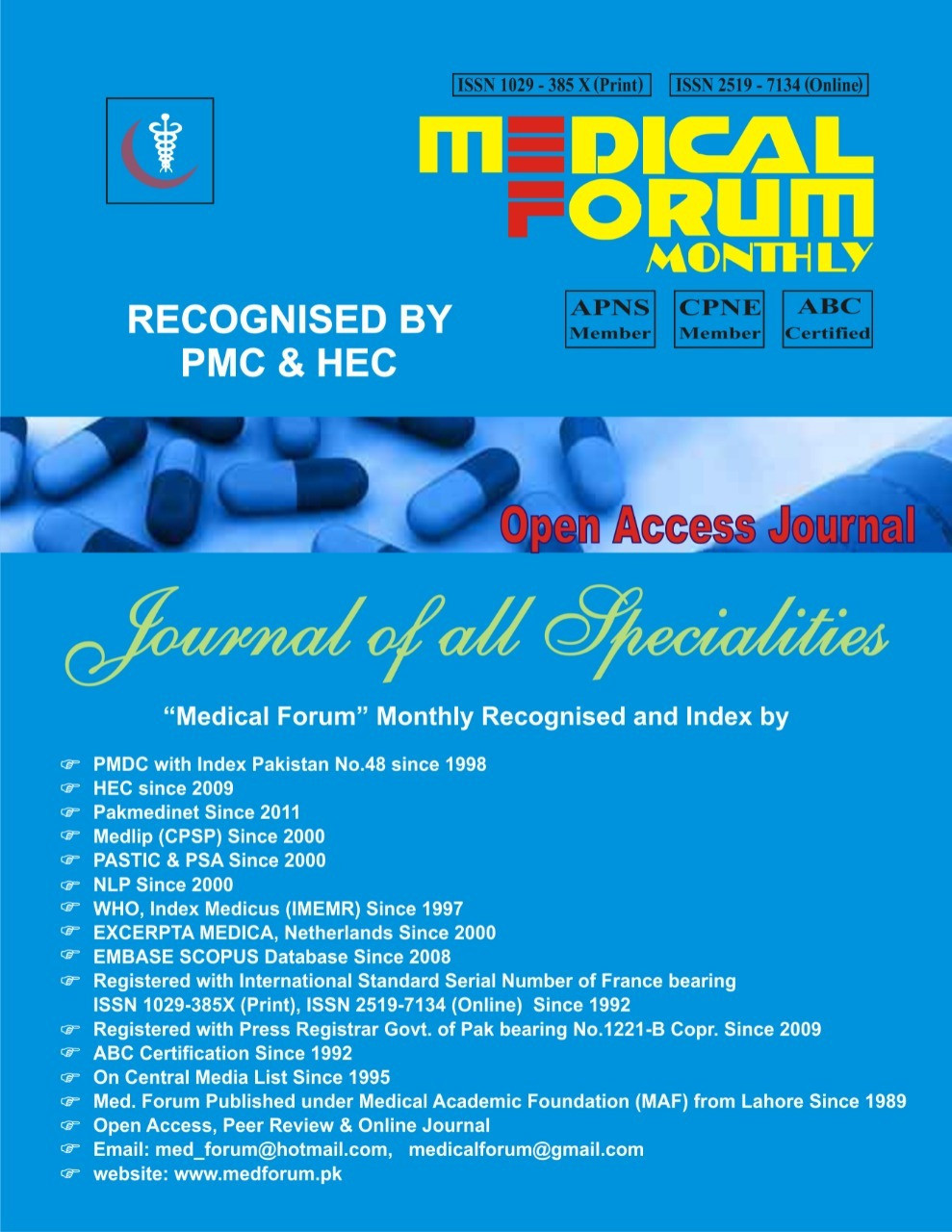
11. Assessing Congenital Heart Disease Subtypes Prevalence in Neonates: A Retrospective Study
Zaland Ahmed1,Ijaz Hussain4, Saadia Ilyas2, Alia Abdul Haq3, Faiza Fayyaz3 and Ghazala3
ABSTRACT
Objective: Determine the prevalence of CHD subtypes through echocardiographic findings.
Study Design: A retrospective study.
Place and Duration of Study: This study was conducted at a tertiary care hospital Peshawar from July to
December 2023.
Methods: A six-month retrospective study was conducted at a tertiary care facility from July to December 2023. From the nursery department, 945 newborns were referred. Thorough examination of the echocardiography data, neonatal screening results, and departmental records were done for data retrieval. Approval from the institutional review board was obtained, data anonymization, and observance of patient privacy was insured.
Results: A total of 945 newborns with a mean age of 7 days were referred from the neonatal unit. Among the clinical manifestations were poor eating (17.8%), tachypnea (26.1%), and cyanosis (40%). Clinical suspicion of CHD (62.8%) and abnormal results from neonatal screening tests (276.6%) were the reasons for referral. Various congenital heart diseases were detected by echocardiographic findings: 314 neonates (33.2%) had ventricular septal defect, 209 had atrial septal defects, 168 had patent ductus arteriosus (17.7%), 63 had transposition of the great arteries (6.7%), and 127 had tetralogy of Fallot (13.4%). Tetralogy of Fallot and transposition of the greater arteries were associated with cyanosis (p < 0.05). Isolated ventricular septal anomalies were linked to poor feeding and underdevelopment (p < 0.05).
Conclusion: Our study highlights the frequency of complicated congenital cardiac abnormalities, patent ductus arteriosus, and ventricular and atrial septal defects. Relationships between certain anomalies and clinical manifestations highlight how complex newborn cardiac disease is. Optimizing outcomes requires the coordinated efforts of healthcare specialists. Our findings, while admitting research limitations, are consistent with the necessity for cooperative methods and early therapies in newborns with congenital heart problems. To improve generalizability and evaluate the effects of long-term interventions on newborn outcomes, prospective, multicenter studies are necessary.
Key Words: Neonatal cardiology, Congenital heart disease, Echocardiography, Referral patterns
